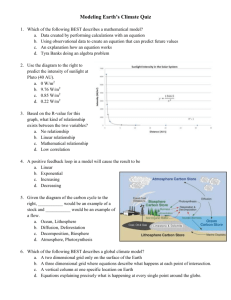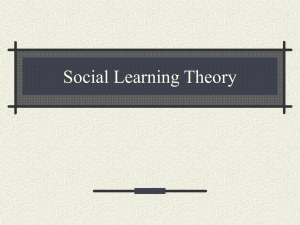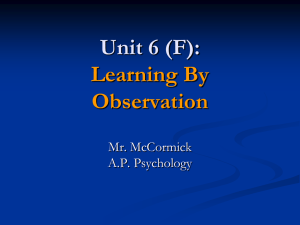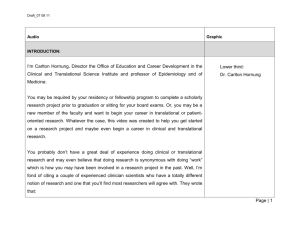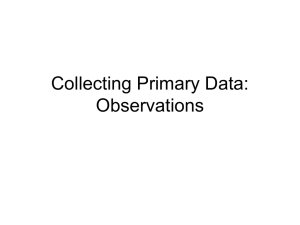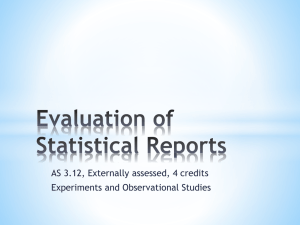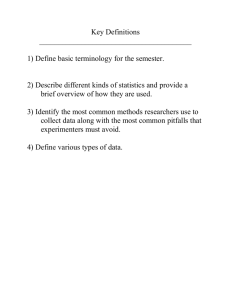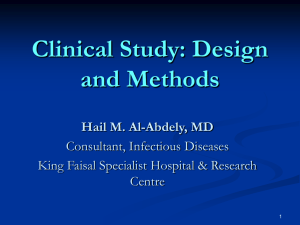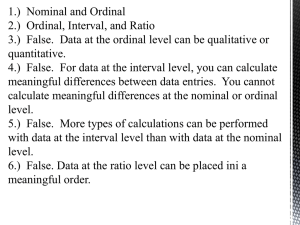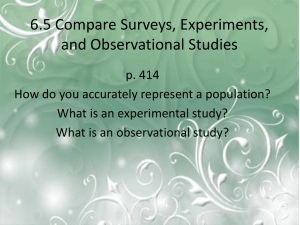Elements of a clinical trial research protocol by Dr Morenike
advertisement
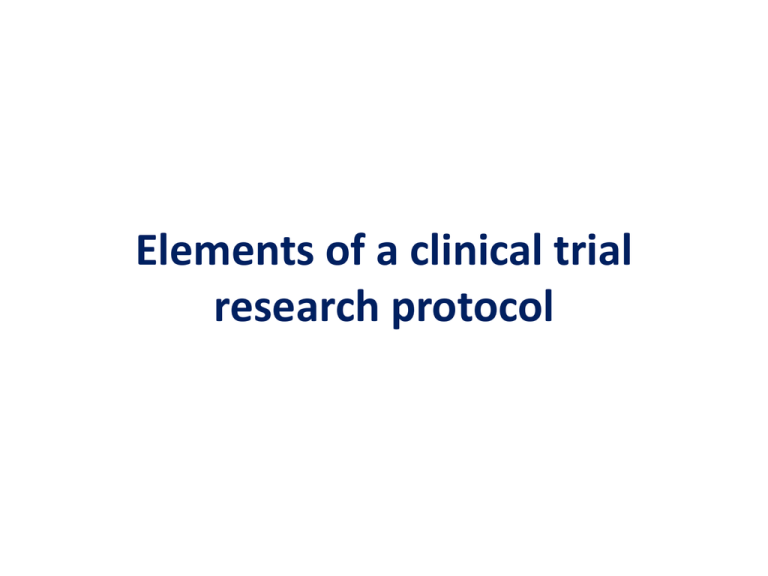
Elements of a clinical trial research protocol Outline • • • • Identify the session objective Discuss the content of a clinical trial protocol Discuss the content of observational study Conclusion Study objective • Participants will learn about the essential elements of a clinical trial protocol • Participants will learn about the essential elements of a protocol developed for observational studies • Participants will learn about existing reporting guidelines that should inform the design and reporting of study protocols Elements of a clinical trial protocol • TITLE: Identification as a randomised trial in the title • INTRODUCTION: Scientific background and explanation of rationale • SPECIFIC OBJECTIVES OR HYPOTHESES: the objectives could be primary, secondary and or tertiary (exploratory) Content of a protocol for clinical trials- 2 METHODOLOGY: • Trial design: description of trial design (such as parallel, factorial) including allocation ratio • Study participants: Eligibility criteria; Settings and locations where the data were collected • Intervention: interventions for each group with sufficient details to allow replication, including how and when they will be administered Content of a protocol for clinical trials- 3 METHODOLOGY: • Sample size: Sample size determination; explanation of any interim analyses and stopping rules if applicable • Randomisation sequence generation: Method used to generate the random allocation sequence; Type of randomisation; details of any restriction (such as blocking and block size) Content of a protocol for clinical trials- 4 METHODOLOGY: • Allocation concealment mechanism: Describe any step or mechanism to be taken to conceal the sequence until interventions were assigned such as sequentially numbered containers. • Implementation plan: Who generated the random allocation sequence, who enrolled participants, and who assigned participants to interventions. Content of a protocol for clinical trials- 5 METHODOLOGY: • Blinding: Describe those to be blinded after assignment to interventions (for example, participants, care providers, those assessing outcomes) and how • Statistical method: Statistical methods to be used to compare groups for primary and secondary outcomes; Methods for additional analyses, such as subgroup analyses and adjusted analyses Content of a protocol for observational studies • TITLE: Indicate the study’s design with a commonly used term in the title • BACKGROUND/INTRODUCTION: Explain the scientific background and rationale for the investigation being reported • OBJECTIVE/HYPOTHESIS: State specific objectives Content of a protocol for observational studies - 2 METHODOLOGY • Study design: Present key elements of study design • Setting: Describe the setting, locations, periods of recruitment, exposure, follow-up, and data collection plans Content of a protocol for observational studies - 3 METHODOLOGY Study participants: • Cohort study: Give the eligibility criteria, and the sources and methods of selection of participants. Describe methods of follow-up • Case-control study: Give the eligibility criteria, and the sources and methods of case ascertainment and control selection. Give the rationale for the choice of cases and controls • Cross-sectional study: Give the eligibility criteria, and the sources and methods of selection of participants Content of a protocol for observational studies - 4 METHODOLOGY Study participants for matched studies: • Cohort study: give details on matching criteria and number of exposed and unexposed • Case-control study: give details on the matching criteria and the number of controls per case Content of a protocol for observational studies - 5 METHODOLOGY • Variables: Clearly define all outcomes, exposures, predictors, potential confounders, and effect modifiers. Give diagnostic criteria, if applicable • Data sources and measurement: For each variable of interest, give sources of data and details of methods of assessment (measurement). Describe comparability of assessment methods if there is more than one group. Content of a protocol for observational studies - 6 METHODOLOGY • Bias: Describe any efforts to address potential sources of bias • Study size: Explain how the study size was arrived at • Quantitative variables: Explain how quantitative variables will be handled in the analyses. If applicable, describe which groupings will be chosen and why. Content of a protocol for observational studies - 7 METHODOLOGY • Statistical methods: Describe all statistical methods, including those to be used to control for confounding; Describe any methods used to examine subgroups and interactions; Explain how missing data will be addressed. Content of a protocol for observational studies - 8 METHODOLOGY Statistical methods: • Cohort study: If applicable, explain how the potential for loss to follow-up will be addressed • Case-control study: If applicable, explain how matching of cases and controls will be addressed • Cross-sectional study: If applicable, describe analytical methods taking account of sampling strategy Clinical trial and cohort studies Differences between clinical trial and cohort studies • Clinical trials generates a prove of concept • Cohorts studies generate evidence to support or disprove a concept Processing protocols • • • • Health Research Ethics Committees National Health Research ethics committees NAFDAC Data Safety and Monitoring Boards Handling of the research protocol • • • • • • Exempt Expedited approval Full committee review Renewal of ethical clearance Handling of protocol amendments Reporting on adverse events Regulatory Definitions Adverse Event (AE) or Adverse Experience Any untoward medical occurrence in a patient to whom a medicinal product has been administered, including occurrences which are not necessarily caused by or related to that product. An adverse event does not necessarily have a causal relationship with the medicinal product. Regulatory Definitions Serious Adverse Event (SAE): An adverse event that meets one of the following criteria's is considered serious: 1. Death 2. Life threatening 3. Involves initial hospitalisation or prolongs hospitalisation 4. Results in permanent or significant disability 5. Results in a congenital anomaly or birth defect 6. Considered medically important by the Investigator Timelines for Adverse Event Reporting • All SAE’s must be reported to the sponsor or appropriate handler within one business day of an individual i.e. Investigator becoming aware of the event. • Deaths and Life -Threatening events should be reported to sponsor immediately by telephone and should be followed up within one business day with a completed SAE form. Reporting guidelines • CONSORT Statement on reporting of randomized controlled trials • STARD on reporting of diagnostic accuracy studies • STROBE on reporting of observational studies in epidemiology • PRISMA on reporting of systematic reviews • MOOSE on reporting of meta-analyses of observational studies Conclusion • There are global standards to design and reporting of research • The standardisation enables uniformity of research activities across the globe. • The process ensures data generate are comparable across regions and sites Thank You and Questions
